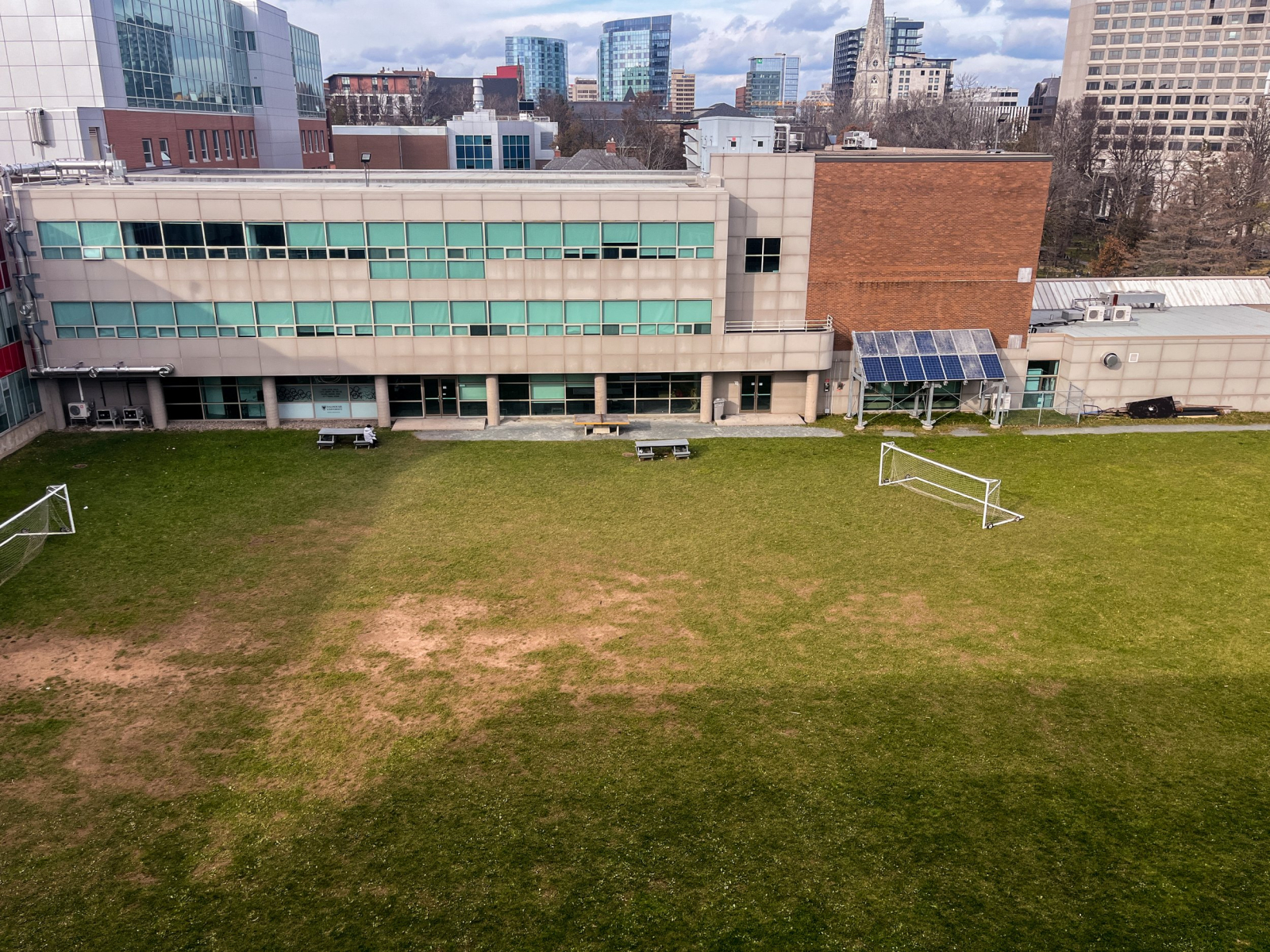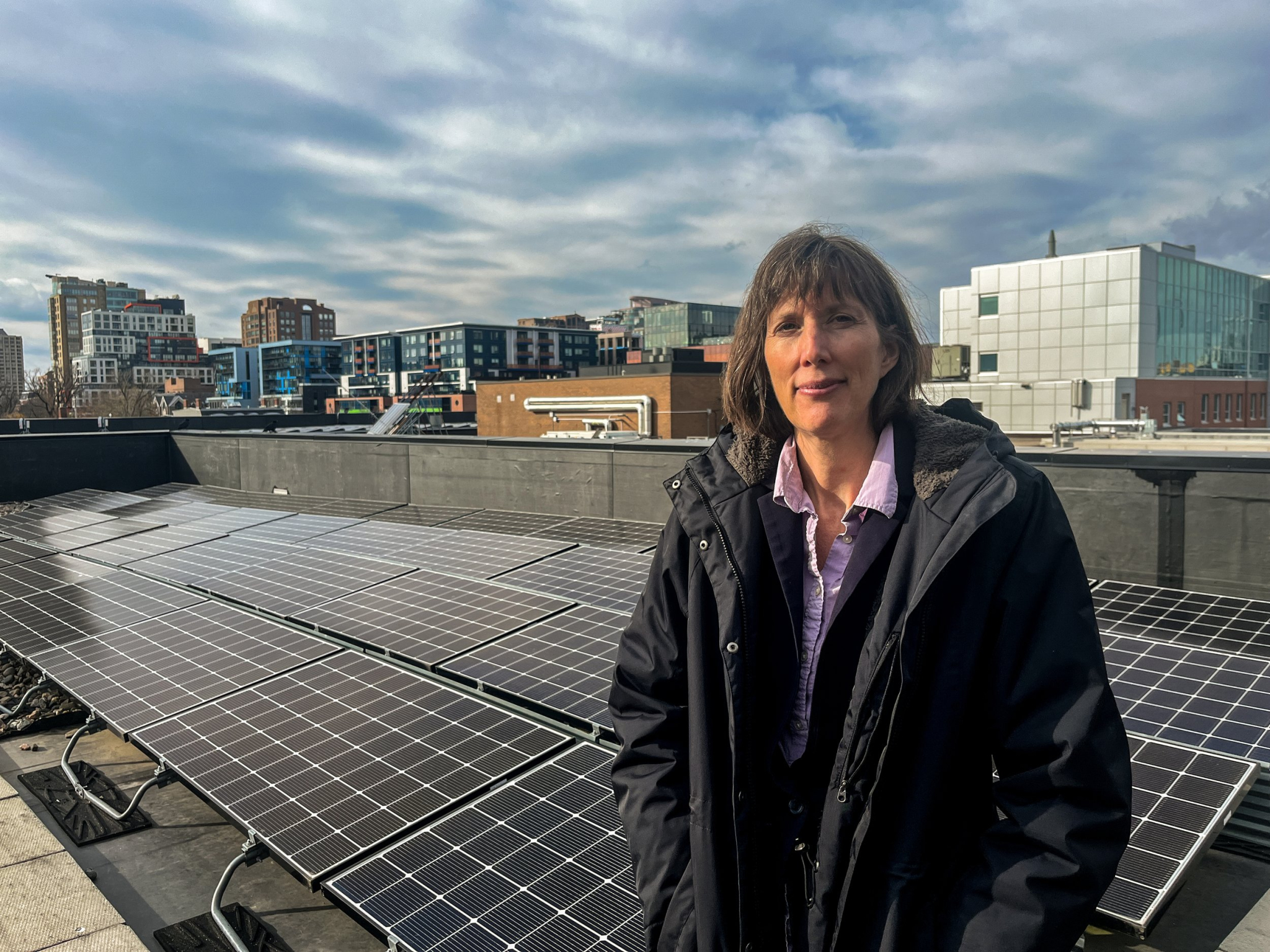Dalhousie University is celebrating the certification of its second LEED Platinum building as a key step toward sustainability, and experts say developers can learn from the school to save both money and energy.
Rochelle Owens, director of Dalhousie’s Office of Sustainability, led the way through a tour of its Emera IDEA Building near Spring Garden Road — from the water-saving tanks in the basement to the solar panels on the roof.
“This was a former parking lot. There were a couple of trees in the back. Those trees were cut down and made into cabinetry, including this green building sign,” she says, indicating the large wood panel at the entrance that explains what makes the building special.

Owens says the building actually opened in 2018, was finished in 2020 and now three years later, has been certified as LEED Platinum, a globally recognized standard. LEED stands for Leadership in Energy and Environmental Design and functions as an international 100-point rating system to express how efficiently a building is designed and operated. Platinum is the highest category, scoring 80 and over. Dalhousie’s Richard Murray Design building also reached platinum.
There are only four LEED Platinum buildings at universities across Canada — and Dalhousie has two of them.
The newly certified building was also the venue for the recent launch of the Building to Zero Exchange, an initiative bringing stakeholders together to build the capacity needed to grow the number of greener buildings in Nova Scotia.
Owens says the most beneficial step was the building envelope, with tighter walls and windows cutting energy use by about 10 per cent. The smarter lighting and HVAC systems use only the energy needed, rather than keeping every room ready all the time.
“It just has more brains to control the systems,” she says.
She points to a soccer field where a few years ago, they drilled 60 boreholes 500-feet deep. “Ironically, it’s the same type of drilling you’d do for oil and gas,” she says.
Once the boreholes were dug, workers then installed pipes that carry cold water down deep, to where the soil is always 10 C, then bring that heat back up to warm the building. The geothermal wells reverse the process in summer to cool the building.
She heads to the roof next but doesn’t start with the solar panels. Instead, she points to a small spout that catches rainwater and collects it to flush the toilets.
The solar installation is Halifax’s second biggest, after IKEA, and creates about 25 per cent of the electricity used by the IDEA building.

She notes that not every building has a roof big enough, and accessible enough, to install solar panels, but it can further reduce the need to burn fuel for the buildings that can do it.
Chris Benjamin, the senior energy co-ordinator at the Ecology Action Centre, agrees that LEED status has limitations.
“LEEDs buildings are great. I will say that they are not for everyone and that’s because they’re very specific — it’s an internationally developed standard,” he says. “It’s not a made-in-Nova Scotia solution. And more importantly, they only work at a certain scale.”
LEED tends to focus on new builds, rather than developing existing properties.
“Compare it to the Ecology Action Centre. No way we’re ever going to get a LEED-certified building for the EAC. The scale’s too big, the type of building wouldn’t work,” Benjamin says. The EAC operates out of a 100-year-old “salt-box” house in Halifax’s north end, yet it’s still “one of the most efficient offices in Canada.”
The group focused on donations and salvaging material from the demolished Roy Building, while also repurposing Metro Transit shelters into stylish glass walls. That cut down the environmental and economic cost of new materials.
“I work a lot with churches. We get calls from them saying we pay a $3,000-a-month oil bill and we want to get solar panels. I say, 'Whoa, hold on. Let’s think about your building first,'” he says.
Like Owens, the first advice he gives them is to seal up the building’s envelope.
“There’s a lot you can do with properly insulating the attic, the steeple, these odd shapes where lots of heat tends to be lost,” Benjamin says.
Better doors and windows further cut the bills. He then makes sure they are reversing the ceiling fans so they blow down cool air in the summer and pull up cold air in the winter. Only then does he suggest they look at installing solar panels.
Benjamin says with Canada needing millions of new housing units, developers are soundly motivated to learn from Dalhousie, retrofits like those done at the EAC, and even old churches.
“I do think developers are definitely thinking about energy because they realize there is a huge savings over the life cycle of the building,” he says.
Owens says that’s one of the many benefits of building with climate change in mind.
Dalhousie plans to further develop the backup battery system so that one day the Emera IDEA Building could provide its own power during peak hours to reduce the overall load on the system.
“Battery technology is rapidly increasing in its ability to provide services with a smaller footprint,” she says. “Kind of like the old computer of yesteryear versus today’s mobile phones.”
This story is being shared by the Climate Story Network, an initiative of Climate Focus, a non-profit organization dedicated to covering stories about community climate solutions.



Comments